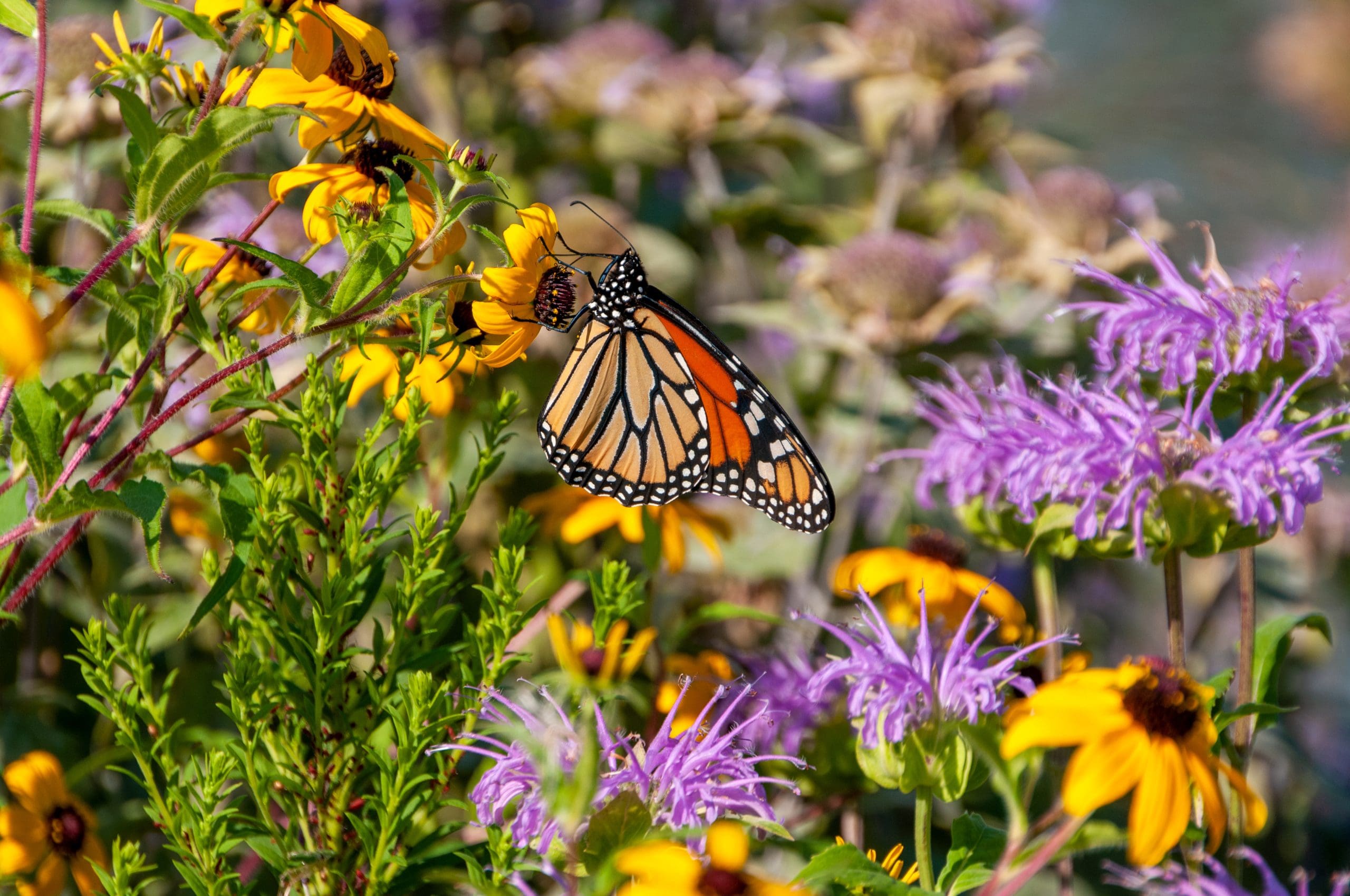
“Native plants give us a sense of where we are in this great land of ours,” Lady Bird Johnson, First Lady of the United States from 1963-1969, famously said. “I want Texas to look like Texas and Vermont to look like Vermont.”
More than 50 years later, the landscape industry — and many of its customers — continue the fight to protect the environment through sustainable landscaping. Choosing between native and non-native plants continues to be an important decision for building a sustainable environment.
Native vs. Non-Native
As the name implies, a native plant is one that naturally grows in a particular geographic region. Because native plants are adapted to the local area, they have natural defenses to local insects and diseases, and often require little maintenance.
Non-native plants have not historically grown in a particular region but have been introduced through human activity. Many non-native plants can grow successfully in regions where they do not occur naturally, but typically require more water, fertilizer and pesticides. Some non-native plants are considered invasive species because they cause harm to the local environment, economy, or health of humans, plants or animals.
Benefits of Native Plants
Choosing to landscape with native plants can make a positive difference for the environment while also saving money for your clients over time.
When native plants are allowed to thrive in their natural habitat, “they are the ecological basis upon which life depends,” according to the National Audubon Society. The insects, animals and microscopic organisms in the soil all depend on the region’s native plants for survival — and when native plants are replaced with non-native plants or urban sprawl, the entire wildlife habitat is disrupted.
For example, research referenced by the National Audubon Society shows that native oak trees support more than 500 species of caterpillars, while ginkgo trees, a popular landscape tree from Asia, hosts only five species of caterpillars. It takes more than 6,000 caterpillars to raise one chickadee’s nest full of baby chickadees: The native plant is important to their survival.
Native plants can also help the environment by improving air quality and preventing water runoff. They may decrease pollution by eliminating the need for mowers and other equipment.
In addition to helping the environment, native plants are also wise investments. Because native plants have adapted over time to the local soil, climate and other conditions, they typically establish quickly and are naturally healthier and hardier than non-native plants. They also require less maintenance, allowing landowners to save money on water, pesticides and fertilizers.
When Non-Native Plants Are Required
Native plants can provide a positive impact on the environment, but some landscaping projects must rely on non-native plants. Non-native plants can provide beauty and color to a landscape, and can also be resistant to certain threats.
When possible, landscape professionals can make a positive difference for the local environment by working to include native plants with non-native plants. Consider your clients’ goals when deciding how many non-native plants to introduce to a landscape and if a native alternative is suitable.
In some cases, it may be more suitable to use plants well adapted to the current local climate rather than selecting a native plant. In regions becoming more arid, non-native plants may be more drought-tolerant than traditional native varieties.
Working to build more sustainable landscapes matters for individual clients as well as their neighbors and larger communities.
“The environment is where we all meet, where we all have a mutual interest; it is the one thing all of us share,” said Lady Bird Johnson. “It is not only a mirror of ourselves, but a focusing lens on what we can become.”

